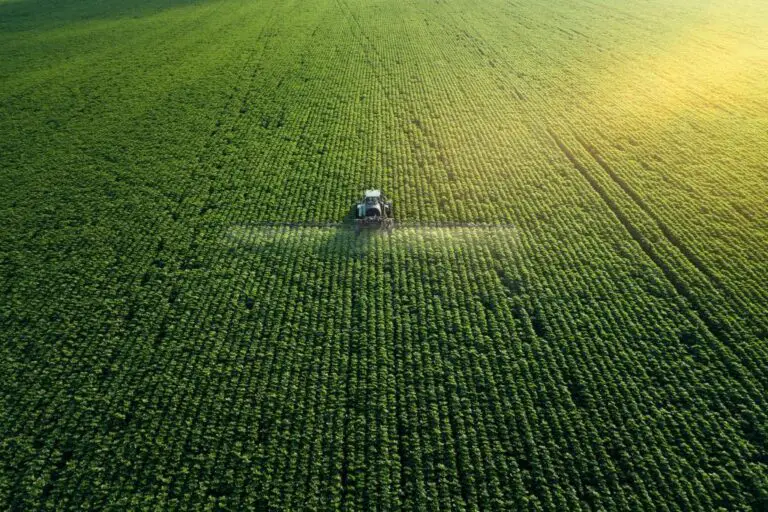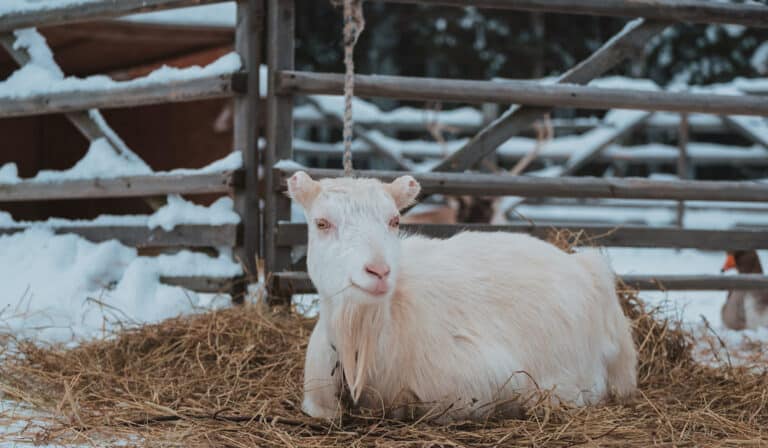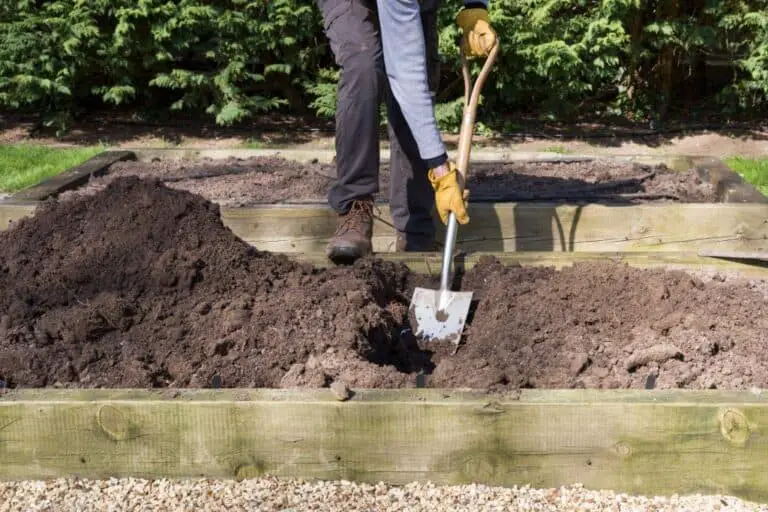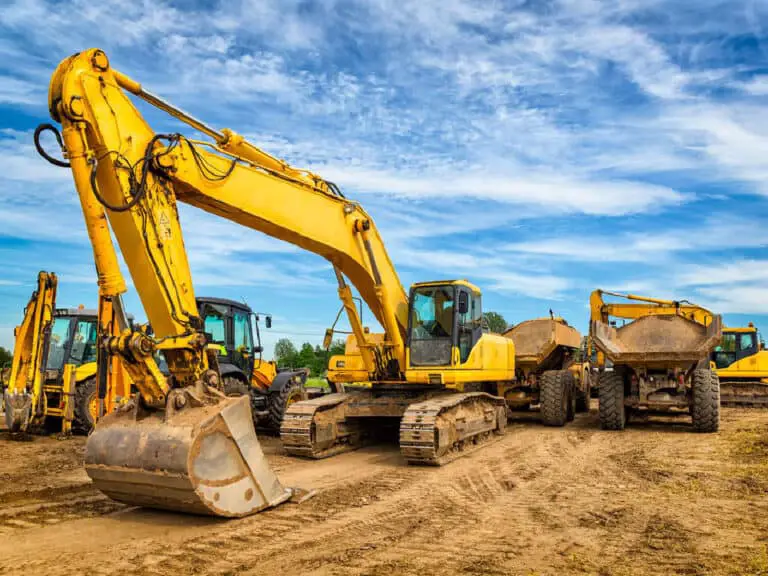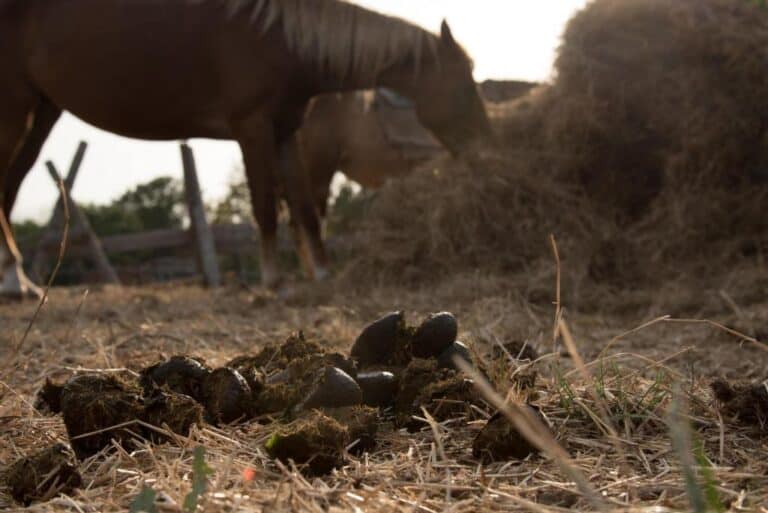Why Is Topsoil Darker Than the Other Levels of Soil?

Imagine walking through a picturesque forest, the dappled sunlight filtering through the towering trees and casting a soft, enchanting glow on the earth beneath your feet. As you tread lightly on the forest floor, you can’t help but notice the deep, almost velvety darkness of the soil.
It’s a scene familiar to anyone who’s spent time in nature, and it raises a question that’s both intriguing and fundamental: Why is topsoil darker than the other layers of soil beneath it?
Topsoil is usually darker than lower layers of soil because it contains dead organic material in various stages of decomposition. The organic matter in topsoil is rich in nutrients and is the primary source of food for plants. The degradation of organic matter in the topsoil creates humus, which is a dark, spongy material that helps to retain moisture and nutrients in the soil.
In this exploration of soil science, we will embark on a journey to uncover the secrets behind this dark veil of topsoil. We’ll delve into the organic mysteries, the decomposition dramas, and the hidden treasures that make topsoil darker than its subterranean counterparts. So, let’s dig deep and unearth the fascinating answers to the age-old question: Why is topsoil darker than the other levels of soil?
The Layers of Soil
Before we dive into the darkness of topsoil, let’s briefly explore the layers of soil that make up the Earth’s crust. Soil consists of several distinct layers, each with its own unique properties and characteristics. These layers are often referred to as soil horizons, and they are typically divided into three main categories:
- Topsoil: This is the uppermost layer of soil and is essential for plant growth. Topsoil is rich in organic matter, minerals, and nutrients, making it the most fertile layer.
- Subsoil: Beneath the topsoil lies the subsoil. It contains fewer organic materials and nutrients compared to topsoil but is still crucial for plant root development.
- Parent Material: The deepest layer of soil is the parent material, often referred to as bedrock. It consists of weathered rocks and minerals and serves as the source material for the layers above it.
Why Is Topsoil Darker Than the Other Levels of Soil?
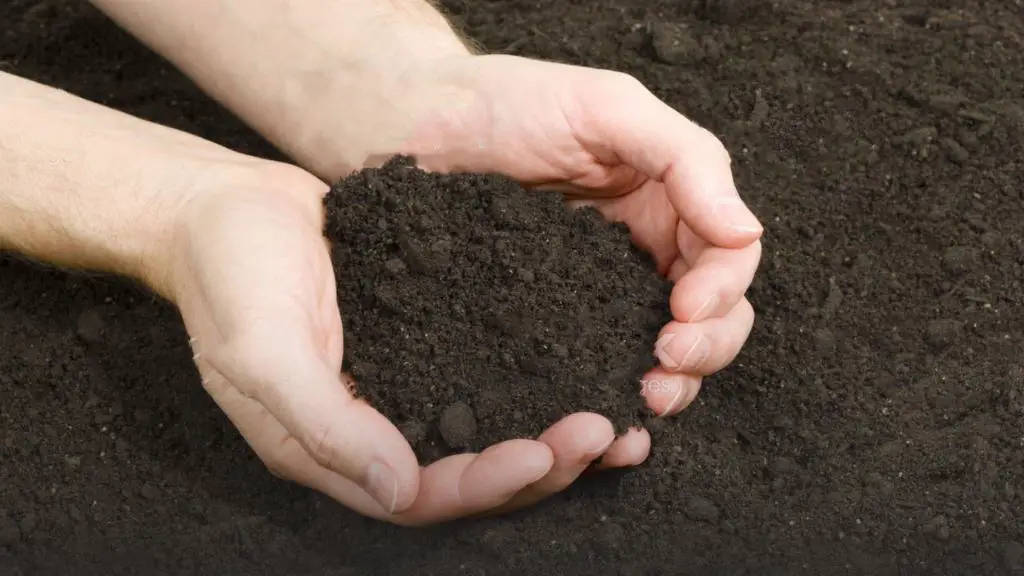
Now that we have a basic understanding of soil layers, let’s uncover the mystery of why topsoil appears darker than the layers beneath it. The answer lies in the organic matter found in topsoil.
1. Organic Matter in Topsoil
Topsoil is teeming with organic matter, which includes decomposed plant and animal material. This organic matter is known as humus and plays a crucial role in making topsoil dark in color. Humus is rich in carbon compounds, and these compounds absorb and retain moisture, creating a fertile environment for plant growth.
2. Minerals Composition
In addition to organic matter, topsoil also contains various minerals, including iron and manganese. These minerals play a pivotal role in soil coloration. When iron and manganese are exposed to oxygen in the presence of water, they undergo oxidation, forming reddish or brownish compounds that contribute to the overall dark color of the soil.
3. Decomposition Processes
The darkness of the topsoil is a result of ongoing decomposition processes. When leaves, branches, and other organic materials fall to the ground, they begin to break down. As microorganisms like bacteria and fungi feast on this organic matter, they release dark-colored substances into the soil. These substances, collectively known as humic substances, contribute to the dark color of topsoil.
4. Microorganisms
Microorganisms, such as bacteria and fungi, are another critical component of topsoil. These tiny life forms thrive in the organic matter-rich environment of topsoil, where they aid in decomposition and nutrient cycling. Their presence can influence the soil’s color as they break down organic matter and release byproducts that may darken the soil.
5. Geographical Location
Geographical location is another factor influencing topsoil color. Soils in different regions around the world exhibit varying colors based on their geological history and mineral content. For example, iron-rich soils may have a reddish tint, while soils abundant in organic matter may appear almost black.
The Value of Dark Topsoil
Dark topsoil, with its rich, ebony hue, is a true gem in the world of soil. Its value extends beyond its visual appeal, as it plays a pivotal role in agriculture and ecological well-being. This dark, nutrient-rich soil is a haven for plants, boasting a diversity of flora that thrives in its welcoming embrace. What makes it even more precious is its knack for holding onto moisture, a trait that helps in drought-prone regions and conserves water resources.
For farmers, this dark topsoil is akin to gold, as it provides the foundation for bountiful harvests and ensures sustainable agricultural practices. Its fertility is unmatched, yielding crops that are not just abundant but also exceptionally nutritious. This soil’s contribution to thriving ecosystems is equally remarkable. From microorganisms to towering trees, it supports a web of life that enhances biodiversity and sustains the delicate balance of nature.
Gardeners and cultivators recognize dark topsoil as a prized asset in their quest for vibrant, flourishing gardens. Its ability to nurture robust plant growth turns gardens into kaleidoscopes of color and fragrance. In essence, dark topsoil is a silent hero in the realm of agriculture and ecology, an unsung champion that enriches the earth and the life it sustains.
Is Dark Topsoil Always More Fertile than Lighter-Colored Topsoil?
The shade of topsoil isn’t the sole yardstick for fertility. Though dark topsoil typically suggests a richer presence of organic matter, fertility is a complex equation. Multiple elements come into play, such as nutrient concentration, soil pH, and the bustling activity of microorganisms beneath the surface. To gauge fertility accurately, it’s crucial to conduct soil tests.
These tests delve deeper into the soil’s secrets. They reveal the nutrient makeup, ensuring that essential elements like nitrogen, phosphorus, and potassium are at optimal levels.
The pH measurement showcases whether the soil is acidic, neutral, or alkaline, which significantly influences nutrient availability. Moreover, microbial activity is a hidden powerhouse, as these tiny organisms break down organic matter, releasing nutrients for plants.
Read: The Science Behind Black Cotton Soil: Is It Organic or Inorganic?
Comparing Topsoil to Subsoil
To better understand why topsoil is darker than subsoil, let’s compare the two in a table:
| Characteristic | Topsoil | Subsoil |
| Organic Matter Content | High | Low |
| Color | Dark | Lighter (often yellow or reddish) |
| Nutrient Content | Rich | Less rich |
| Moisture Retention | Excellent | Moderate to poor |
| Microbial Activity | High | Lower |
As the table illustrates, the stark difference in organic matter content is the primary reason for the darker color of topsoil. The higher levels of organic matter in topsoil not only give it a dark appearance but also make it a fertile haven for plants.
Factors Influencing Topsoil Color
While organic matter is the primary factor contributing to the darkness of topsoil, several other factors can influence its color:
- Mineral Content: The type and amount of minerals present in the soil can impact its color. For example, soils rich in iron may have a reddish tint.
- Environmental Conditions: Environmental factors like climate, rainfall, and temperature can influence soil color over time. Wetter conditions may lead to leaching of minerals, altering soil color.
- Human Activity: Human activities such as agriculture and construction can disturb the natural composition of topsoil, affecting its color and fertility.
Conclusion
In the intricate world of soil science, the darkness of topsoil is a testament to the rich tapestry of life that exists beneath our feet. It is a result of the organic matter, humus, which not only lends its dark color but also provides the nutrients and moisture essential for plant growth.
Understanding the unique characteristics of topsoil enriches our appreciation of the natural world and the vital role soil plays in sustaining life on Earth. So, the next time you admire a lush garden or a thriving forest, remember that the dark topsoil beneath your feet is the foundation of that vibrant ecosystem.
FAQs on Topsoil Darker Than the Other Levels of Soil
Why is topsoil important for gardening?
Topsoil is crucial for gardening because it’s rich in nutrients, organic matter, and beneficial microorganisms. It provides a fertile environment for plant roots to thrive, supporting healthy growth and robust yields.
How can I improve the color of my topsoil?
You can enhance topsoil color by incorporating organic matter like compost or well-rotted manure. These materials add dark humus, improving color while enriching soil fertility.
What causes topsoil erosion?
Topsoil erosion results from factors like rainfall, wind, and improper land use practices. It occurs when the topsoil layer is washed or blown away, often due to insufficient vegetation or inadequate soil conservation measures.
Are there natural ways to darken topsoil?
Yes, natural ways to darken topsoil include allowing organic matter to decompose over time, adding mulch, or planting cover crops that enhance soil health.
Can topsoil color indicate soil contamination?
Yes, unusual colors in topsoil, such as orange or black, can signal potential soil contamination. Conduct soil tests to identify contaminants accurately.
Does all topsoil have the same dark color?
No, topsoil color can vary. While dark topsoil is common due to organic matter, it can range from dark brown to black depending on local conditions.
Can topsoil color change over time?
Yes, topsoil color can change due to factors like weathering, organic matter decomposition, and land use practices. It may darken or lighten over time.
Is dark topsoil always more fertile than lighter-colored topsoil?
Not necessarily. While dark topsoil often indicates higher organic matter content, fertility depends on a combination of factors, including nutrient levels, pH, and microbial activity. Conduct soil tests to assess fertility accurately.

